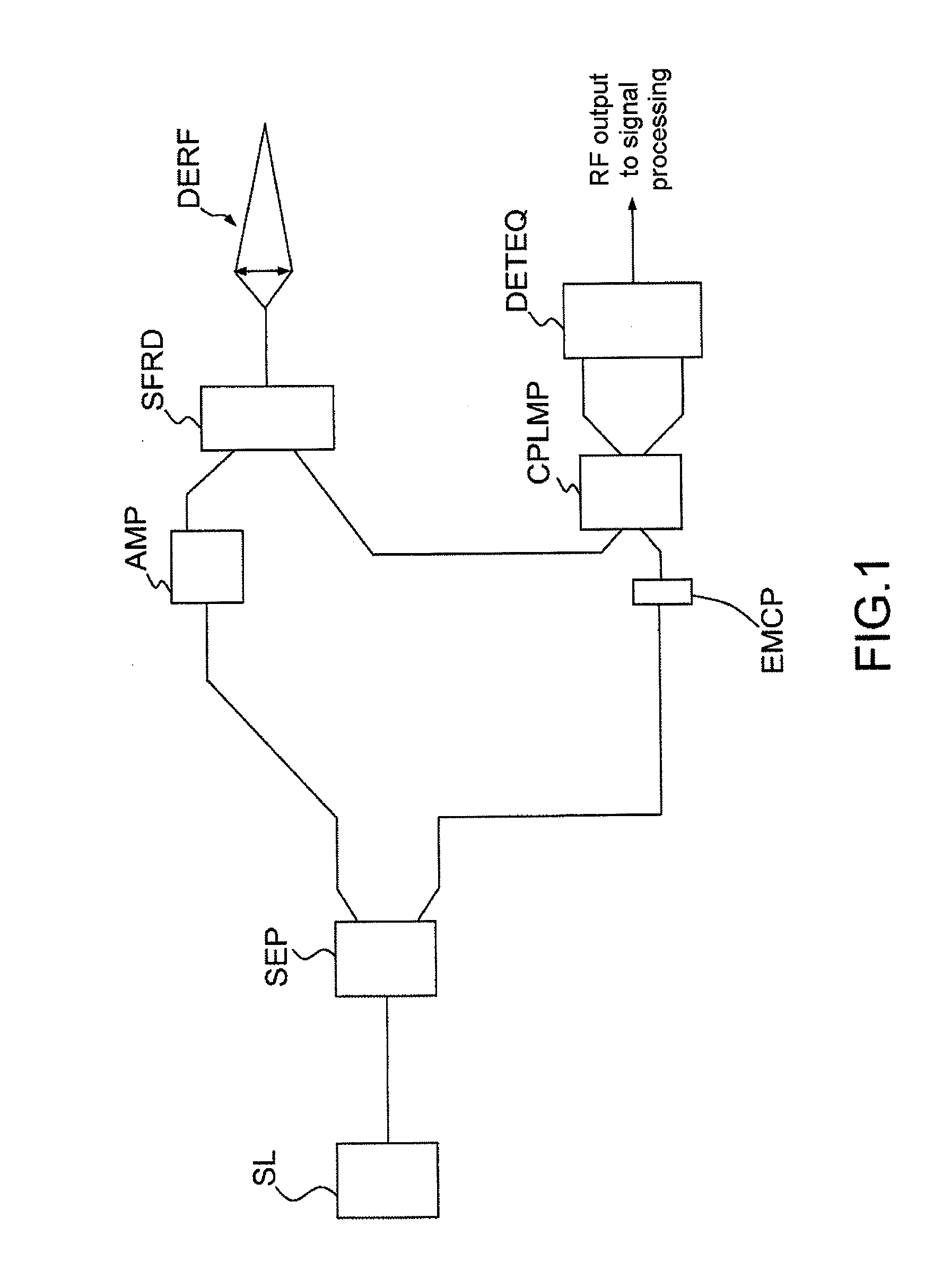Biaxial Laser Anemometry Probe
a laser anemometer and biaxial probe technology, applied in the field of laser anemometers, can solve the problems of increasing the risk of failure of certain elements, high cost of combining two mono-axial probes to form a bi-axial probe, and almost impossible to directly obtain the relative speed vector in relation to the air, etc., to achieve the effect of low cost and large-scale production
- Summary
- Abstract
- Description
- Claims
- Application Information
AI Technical Summary
Benefits of technology
Problems solved by technology
Method used
Image
Examples
Embodiment Construction
[0032]As illustrated in FIG. 2, a biaxial laser anemometry probe comprises a laser source SL supplying a linearly polarized reference wave, a first separator SEP1 separating the signal originating from the laser source SL into a signal transmitted to a first amplifier AMP1 and a signal transmitted to a coupler with maintained polarization CPLMP.
[0033]The biaxial laser anemometry probe also comprises a first device DERF1 for transmitting / receiving beams in a first direction, or, in a slight misuse of language, along a first axis, and a first backscattered beam separator SFRD1 arranged between the first amplifier AMP1 and the first transmitter / receiver device DERF1.
[0034]The biaxial laser anemometry probe is also provided with a second device DERF2 for transmitting / receiving beams in a second direction distinct from the first direction, or, in a slight misuse of language, along a second axis distinct or of different direction from the first axis, and with a second backscattered beam s...
PUM
 Login to View More
Login to View More Abstract
Description
Claims
Application Information
 Login to View More
Login to View More - R&D
- Intellectual Property
- Life Sciences
- Materials
- Tech Scout
- Unparalleled Data Quality
- Higher Quality Content
- 60% Fewer Hallucinations
Browse by: Latest US Patents, China's latest patents, Technical Efficacy Thesaurus, Application Domain, Technology Topic, Popular Technical Reports.
© 2025 PatSnap. All rights reserved.Legal|Privacy policy|Modern Slavery Act Transparency Statement|Sitemap|About US| Contact US: help@patsnap.com



